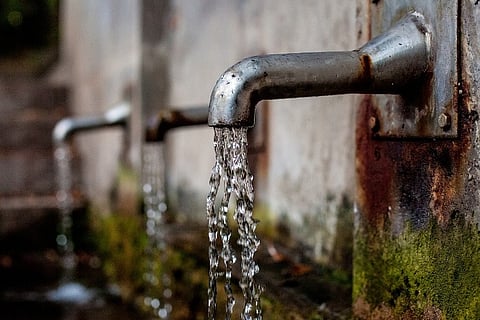

On the back of three consecutive droughts, Bengaluru is likely to face a drinking water shortage beginning January.
To tide over the shortage, the Bengaluru Water Supply and Sewerage Board (BWSSB) is gearing up to meet the need for drinking water that will worsen until the monsoons.
Kemparamaiah, BWSSB Engineer-in-Chief, says he has written to the Cauvery Neeravari Nigama regarding a possible crisis. Bengaluru requires 1,400 MLD of water every day, but the Board is able to supply only 1,250 MLD, as the water level in the KRS dam is low, he added.
A team of BWSSB officials will spread awareness among people for need of water conservation methods and urge residents to install rain water harvesting (RWH) systems. This, despite rules mandating households to install RWH systems having been in force since 2009.
According to a study by the Centre for Energy and Wetlands Research Group at the Indian Institute of Science, Bengaluru has about 9.15 lakh water connections. An estimated 1.4 lakh consumers should have installed rain water harvesting systems but only 62,000 have done it.
Although leaks, the rising demand for water and non-implementation of rules remain largely unaddressed, the BWSSB is making plans to tide over the immediate problem of supplying water during the winter and summer months.
One of the measures that the Board is taking up is to repair government-owned borewells and get them in working order. “The city has 7,952 borewells. The BWSSB will carry out repairs where needed to ensure that all of them are in working condition in case of a scarcity. BWSSB has 68 tankers and the filling stations are being monitored in case tankers need to be deployed,” Kemparamaiah said.
Bengaluru’s borewells – whether authorised or not – have brought down ground water levels to dangerously low levels. In the state capital and surrounding areas, ground water is available at around 1,000 feet.
Many of Bengaluru’s lakes are human-made, created precisely to meet the water needs of a landlocked region with few rivers nearby.
An IISc study shows that 90% of these lakes are either polluted or encroached up on, thanks to poor governance and non-implementation of rules.
It also revealed that 98% of the lakes were encroached by mafia and 90% of lakes were being killed by untreated sewage and industrial effluents, dumping of solid wastes and building debris. Water quality analysis of 80 lakes found that almost half of the lakes were highly polluted.
It is hardly surprising that fish deaths were reported in Sankey, Ulsoor, Lalbagh, Jakkur and Munnekolala lakes in the last few years. Other indications that something is seriously wrong with the lakes is that Bellandur lake once caught fire, and lakes such as Maragondanahalli, Rampura, Sarakki and Varthur have often had foam bubbling over the surface and onto the streets.
None of the lakes – except for Mylasandra lake – had water that was fit for drinking according to standards set by the Central Pollution Control Board (CPCB). 79% lakes were found suitable for irrigation, industrial cooling or controlled waste disposal, and just 29% lakes were found suitable for fish culture and wildlife propagation.
The lakes in the Koramanagala-Challaghatta valleys were the most polluted as compared to those in the Hebbal, Vrushabahavthi valley, the study showed.
One of the authors of the IISc study, Dr TV Ramachandra told The News Minute, “Bengaluru gets 750-800 mm of water every year and around 15 TMC of rain water can be harvested with it. Totally, the city needs 18 TMC of water per year. Lakes are the best way to harvest rain water. Earlier, the city had an inter-connected system of lakes to harvest rain water. Currently, Bangalore's lakes can only store 3.5 TMC of rain water because of rampant encroachment and pollution. If a mechanism to store rain water can be sorted out, Bengaluru's water problems can be solved.”